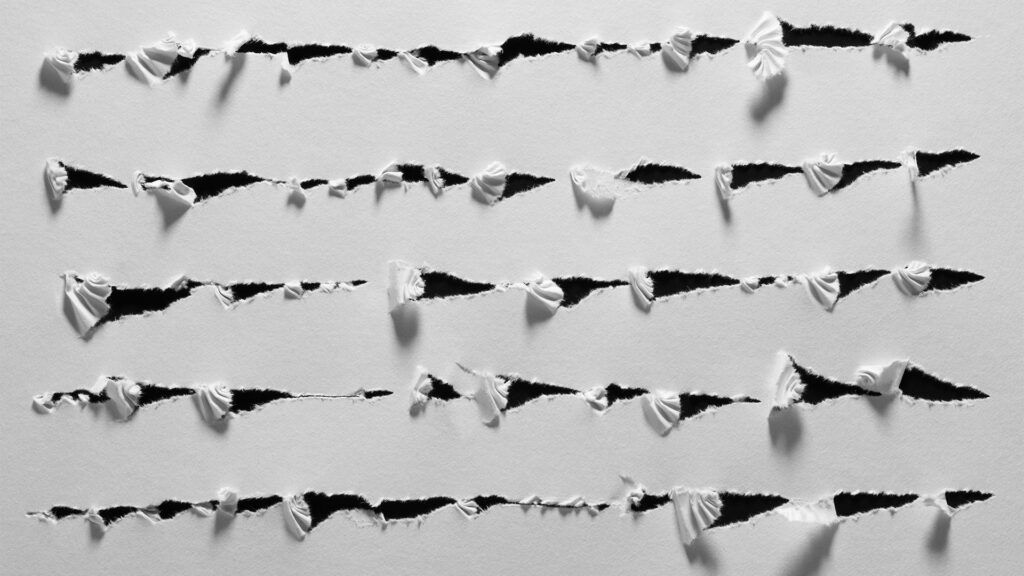Aichmophobia is a type of specific phobia that can cause feelings and physical symptoms of intense anxiety around sharp objects.
Aichmophobia, or fear of sharp objects, is a phobia. Phobias are anxiety disorders that can significantly impact a person’s life, depending on the type of phobia someone has.
This article explains what aichmophobia is, what causes it, symptoms of aichmophobia, and treatments.

Aichmophobia is the fear of sharp objects, such as knives, needles, glass fragments, scissors, or sharp corners.
Aichmophobia belongs to a group of phobias that scientists classify as ‘”specific phobias.” Specific phobias are one of three broad categories of phobia. They are:
- Specific phobias: These relate to a fear of a specific object, phenomenon, or situation.
- Social phobias: These relate to a fear of being judged by others or feeling embarrassed or humiliated.
- Agoraphobia: This is the fear of being in public places or busy, crowded spaces without an obvious or simple means of escaping. In severe cases of agoraphobia, a person may become afraid to leave their own home due to feeling unsafe.
The
- Animal type: Such as the fear of spiders, bats, reptiles, fish, or insects.
- Natural environment type: Common examples include fear of heights (acrophobia), fear of water (aquaphobia), and storms.
- Blood, injection, and injury (BII) type: Examples include fear of sharp objects, fear of injections (trypanophobia), and fear of blood (hemophobia).
- Situational type: Common situational type phobias include fear of cramped or small spaces (claustrophobia) and fear of flying.
- Other type: Any phobia that does not fit into any of the above types.
Many people develop specific phobias before the age of 20. Some might find that the severity of their phobia lessens as they get older, but this will not necessarily happen for everyone.
Experts do not yet know the cause of aichmophobia and other specific phobias.
However, one theory is that the cause may include both psychological and biological responses to a specific stimulus and a negative, unsupportive environment.
Specific phobias, including aichmophobia, may arise in response to a traumatic incident involving the stimulus.
The signs and symptoms of aichmophobia include:
- heart palpitations
- irritability
- breathing difficulties
- anxiety
- sweating
- dizziness when in the presence of a sharp object
A person with aichmophobia might also think about and attempt to avoid exposure to sharp objects excessively, causing them distress. For some people, the thought of exposure to needles or other sharp objects can trigger a panic attack.
It is possible for a person to manage and overcome specific phobias, including aichmophobia, with the help of a mental health professional.
Psychotherapy
A mental health professional may recommend treatment options such as exposure therapy or cognitive behavioral therapy (CBT) as potential treatments.
During exposure therapy, a person will gradually expose themselves to the specific stimulus they fear — such as a needle or other sharp object — in a safe controlled environment with a mental health professional present until their response to the object diminishes over time.
CBT is a type of psychotherapy that can help someone identify the source of their feelings of fear in order to change their response to the stimulus and reprogram unhelpful beliefs they may have.
Medications
If psychotherapies do not prove effective in helping a person manage their phobia, certain medications, such as selective serotonin reuptake inhibitors (SSRIs), or beta-blockers can help manage the symptoms of anxiety.
The following are some questions people frequently ask about aichmophobia.
How many people have aichmophobia?
Researchers believe that up to
What is the rarest phobia to have?
Researchers do not know what singular specific phobia is the rarest, but rare phobias include fear of walking, fear of chewing gum, fear of mirrors, and fear of long words.
Aichmophobia is a fear of sharp objects such as knives, needles, or sharp corners and edges. Symptoms include heart palpitations, dizziness, and shortness of breath.
Experts do not know the exact cause of aichmophobia, but it may arise in response to trauma or vicarious trauma.
As with other specific phobias, aichmophobia is typically treatable. Treatments may include psychotherapy such as CBT or exposure therapy, medications, or a combination of both.
